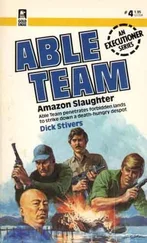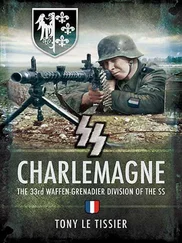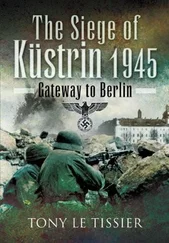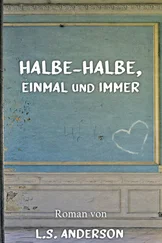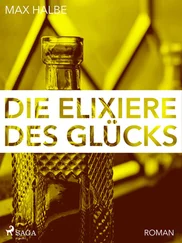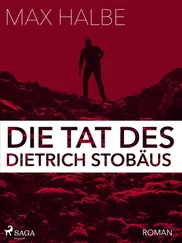The Soviets stood there silently, side by side, and listened. Then we had to make our way into captivity. I was soon separated from my men and never saw any of them again. [34] Wilke archives. The ‘Wolchow club’ was made of hard wood and was a souvenir of Porsch’s involvement in close-quarter fighting in the area of that name (usually spelt as Volkhov in English) east of Leningrad.
However, XI SS Panzer Corps’ greatly reduced rearguard, under SS-Major May, managed to get through the same area and pushed through westwards north of the main group, meeting up with it in the Trebbin Forest the following night. [35] Tieke, Das Ende zwischen Oder und Elbe , p. 328.
The condition of the troops in his break-out group was now such that General Busse signalled General Wenck:
The physical state and morale of the officers and men, as well as the states of ammunition and supplies, permit neither a new attack nor long resistance. The misery of the civilians who have fled out of the pocket is particularly bad. Only the measures taken by all the generals have enabled the troops to stick together. The fighting capacity of 9th Army is obviously at an end. [36] Busse, ‘Die letzte Schlacht der 9. Armee’, p. 168.
This bitter struggle continued for two days. The Soviets then claimed to have killed 60,000 and captured 120,000 prisoners, 300 tanks and self-propelled guns and 1,500 pieces of artillery. In the obscurity of the woods the Soviets may well have been misled, at least temporarily, into thinking that they had caught the bulk of 9th Army and later, having realized their error, were happy to prolong the myth.
Marshal Koniev then reinforced his defence sectors and ordered attacks on the various German groups, in all deploying 15 infantry regiments or armoured brigades with about 150 tanks and SPGs, and 1,000 artillery pieces, mortars and anti-tank guns. He had 13th Army’s 395th Rifle Division redeploy from the Golssen–Baruth sector to the Mückendorf area, while 117th Guards Rifle Division of the same army was ordered to attack towards Kummersdorf Gut to prevent a breakthrough to Luckenwalde, which 68th Independent Guards Tank Brigade was ordered to block off. Then, to block the route to Beelitz, he had 63rd Guards Tank Brigade and 7th Motorcycle Regiment of 10th Guards Tank Corps of 4th Guards Tank Army deploy from the Michendorf area to Trebbin, where these forces were to control the traffic junctions. The 71st Mechanized Brigade, which was deployed along the Zossen–Kummersdorf Gut railway line in the Sperenberg area, was reinforced by two regiments of 61st Rifle Division of 28th Army. 3rd Guards Rifle Corps, also of 28th Army, was given the task of destroying the German troops in the Mückendorf woods with a double thrust from the Lindenbrück–Zesch sector to the south and from the Radeland–Baruth sector to the north. [37] Lakowski/Stich, Der Kessel von Halbe 1945 , pp. 125–8.
Meanwhile Zhukov’s armies narrowed down the remaining pockets of resistance east of Halbe during the day, their advance reaching the line Halbe–Löpten–Hammer–east bank of the Dahme, while 1st Ukrainian Front’s 3rd Guards Army maintained pressure along the line Teurow–Märkisch Buchholz.
From the Prieros area we have the following account:
On 29 April 1945 at about 0400 hours I was wounded while manning a forward position near Prieros, apparently by Seydlitz-Troops. My sleeping comrade was not hit by their fire, and I had to wake him from his exhausted sleep to bandage me. Neither had our company, 200 metres back, noticed, although I had thrown two hand grenades. The mill that I was told was our main dressing station turned out to have been vacated and I had to fight for a place on the trucks heading back, eventually finding a place on a mudguard. Ever more wounded had to be taken aboard and any combat-capable soldiers were obliged to get off, most of them being unarmed.
Even when the trucks were more than overloaded with wounded, there were still more waiting on the roadside. A young army doctor had to decide who among the wounded being transported had to get off. I watched him closely and noted that the decision over life and death was not an easy one for him.
As I was travelling on the mudguard, I was told, since I was fit enough, to look out for enemy aircraft as we drove along. Many times we had to take cover on the side of the road, for which the many foxholes dug there provided a good service. As yet again more ground-attack aircraft approached, I could only see one such foxhole some distance away. I ran to it and dived in at the same time as another soldier, who had the same intention as myself. It turned out to be a happy surprise, for the other soldier was a chap I had known from Stralsund who had been in the same company, and from then on we stayed together. [38] Wilke, Am Rande der Strassen , p. 99.
General Wenck’s attack had made good progress that day and by the evening the leading elements of Lieutenant-General Engel’s Ulrich von Hutten Infantry Division had reached the village of Ferch at the southern tip of the Schwielowsee, some ten kilometres south of Potsdam, but in so doing reached their operational limit. The 12th Army could only improve its newly won positions a little, while holding on against increasing Soviet pressure, as it awaited the arrival of the others to break through to them. There was some particularly severe armoured fighting around the autobahn fork.
Lieutenant-Colonel Alfred Müller led his Schill Division through the Lehniner Forest on the left flank, and a Major Nebel pushed forward with some SPGs along the firebreaks to the very end of the forest, where the Russian armour was waiting and engaged them. However, Nebel’s guns outflanked the danger points to hit the Soviets in their flanks and rear. The sounds of battle carried right through the Lehniner Forest to the lakes and the Potsdam garrison beyond.
Wenck contacted General Reymann of the Potsdam garrison and ordered an immediate break-out to his lines, which was begun that evening and completed the following night, the garrison making its way by boat across the Schwielowsee, or along the shore by foot. Reymann broke through with the leading groups and met up with Lieutenant-Colonel Müller. They silently shook hands before Reymann moved on to report to Wenck’s headquarters. When they arrived, the troops of the Potsdam garrison were then shared out among the Schill and Hutten Divisions as reinforcements. [39] Gellermann, Die Armee Wenck , pp. 86–7.
Wenck then signalled an invitation to General Weidling in Berlin: ‘Counterattacks by 12th Army stalled south of Potsdam. Troops engaged in very heavy defensive fighting. Suggest you break out to us.’ This signal was not acknowledged and it is doubtful if Weidling even received it. [40] Wenck, ‘Berlin war nicht mehr zu retten’, pp. 66–7; Strawson, The Battle for Berlin , p. 146. Neither von Dufving nor Refior mention it in their accounts.
Wenck passed Busse’s message on the state of his troops on to the OKW, which in the meantime had put an end to any chances of relief from this direction by disclosing 12th Army’s dispositions and intentions in the afternoon radio communiqué. This made it even more difficult for 12th Army to hold on to its positions. The army’s situation was already precarious enough in any case with 5th Guards Mechanized Corps and 13th Army trying to cut off its line of retreat to the Elbe. That same evening Wenck’s position was further imperilled by a sudden attack northward towards Wittenberg by American troops bursting out of their bridgeheads in his rear. Fortunately this attack was not pursued, presumably because of the policy imposed from above of not intervening in the Soviet area of operations. [41] Wenck, ‘Berlin war nicht mehr zu retten’, p. 68.
Читать дальше

